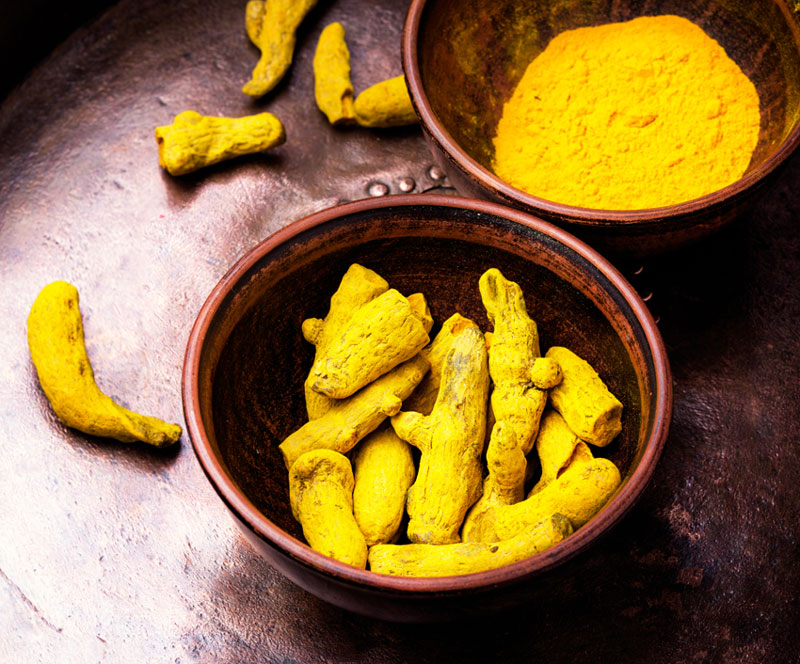 India controls nearly 80 per cent of the global supply of turmeric and turmeric-based ingredients. This tiny little medicine from India, known for its cosmetic and pharmaceutical applications, is exhibiting strong growth in the years to come
India controls nearly 80 per cent of the global supply of turmeric and turmeric-based ingredients. This tiny little medicine from India, known for its cosmetic and pharmaceutical applications, is exhibiting strong growth in the years to come
The traditional Indian herb known for its medicinal purposes, turmeric (genus: Curcuma, family: Zingiberaceae, key active ingredient: curcumin, local name: Haldi), is going to be a billion-dollar business within a few years from now. According to a study by Grand View Research, the worldwide turmeric market will touch $1.30 billion mark in the year 2025, growing by 12.3 per cent annually from this year onward. The total turmeric market is expected to be over half-a-billion dollars in the current calendar year.
An inseparable part of the Indian tradition
A rhizomatous plant from the ginger family, turmeric is found abundantly in India and the most Southeast Asian countries. The plant requires ample rainfall and a moderate 20- to 30-degrees temperature for its growth and propagation. Used in India and several other Asian countries as a medicine for thousands of years, the benefits of turmeric have been well-documented in ancient systems of medicine such as Ayurveda, Siddha, traditional Chinese medicine, and Unani.
Used in the form of dry powder or paste, turmeric has been regarded as a suitable ingredient in several pharmaceutical, cosmetic, and culinary applications. The worldwide market for turmeric is expected to experience a substantial rise in revenue over the next seven years due to increasing awareness about its health benefits amongst consumers.
The cosmetic uses of turmeric
A herbal ingredient of choice of many cosmetic manufacturers, turmeric’s high, anti-inflammatory and antioxidant properties have been acknowledged world over. The herb is widely used as the core ingredient in a variety of personal care products. In the skin care segment, it is used as a cure for skin diseases such as eczema and acne and as a cure for and to prevent dry skin. It is used in several anti-ageing creams as a natural ingredient to arrest the ageing process and its visible effects on the human skin in the form of wrinkles.
It has been proven and well-accepted now that turmeric, when added to natural cleansers like milk, can work wonders on the human skin providing it with a natural and lasting glow. As mentioned above, it also helps in arresting the growth of crease formation and wrinkles.
The pharmaceutical applications
According to Grand View’s research, pharmaceutical has been found to be the largest application segment, consuming over half the supply of turmeric worldwide. The herb is widely used as an ingredient in several OTC supplements. Some of the leading players in the ingredients space that supply turmeric based ingredients include Arjuna Natural Extracts Ltd, BioMax Life Sciences Ltd, Helmigs Prima Sejahtera PT, Hindustan Mint & Agro Products Pvt Ltd, Sabinsa Corporation, Sabinsa Corporation, Synthite Industries Ltd, and Wacker Chemie AG.
Many of these companies have been investing in research and innovation to stay competitive in the market. For instance, the supplier Arjuna Natural Extracts Ltd invested nearly $1.5 million in the proactive turmeric research in March 2016. With new research and experiments being conducted on the effects of turmeric on the human body, its new uses are coming to light. For example, its therapeutic use is being examined in treating a range of diseases and ailments such as Alzheimer’s disease, the ailments of the liver, and so on.
Other applications
In addition to the pharmaceutical and cosmetic applications, turmeric is used in other industries too. For example, it is used as a natural colourant in the textile industry to dye materials such as silk, cotton, and wool to give them a pleasant, yellowish-orange shade. Rice milling and leather dying are other two industries that make use of turmeric as a colourant.
Region-wise trends
The survey reveals several interesting findings. A select few are given below.
- India dominates the global market as the largest supplier of turmeric with production exceeding approximately 80 per cent of the global market. Majority of the turmeric and turmeric based ingredients are exported to North America and European regions
- North America has been found to be the largest region with a market revenue of $261.2 million in the year 2016. The increasing demand for the processed food products and the turmeric-based health supplements is likely to further catalyse the growth of turmeric in the near future
- The European market is predicted to be fastest-growing region clocking a revenue growth of 16.6 per cent over the next seven years—the forecast period. Increasing demand from buyers and the regulatory support from the European Food Safety Association (EFSA) are expected to provide a major boost to the sales of turmeric and turmeric-based products in this region, according to Grand View Research

